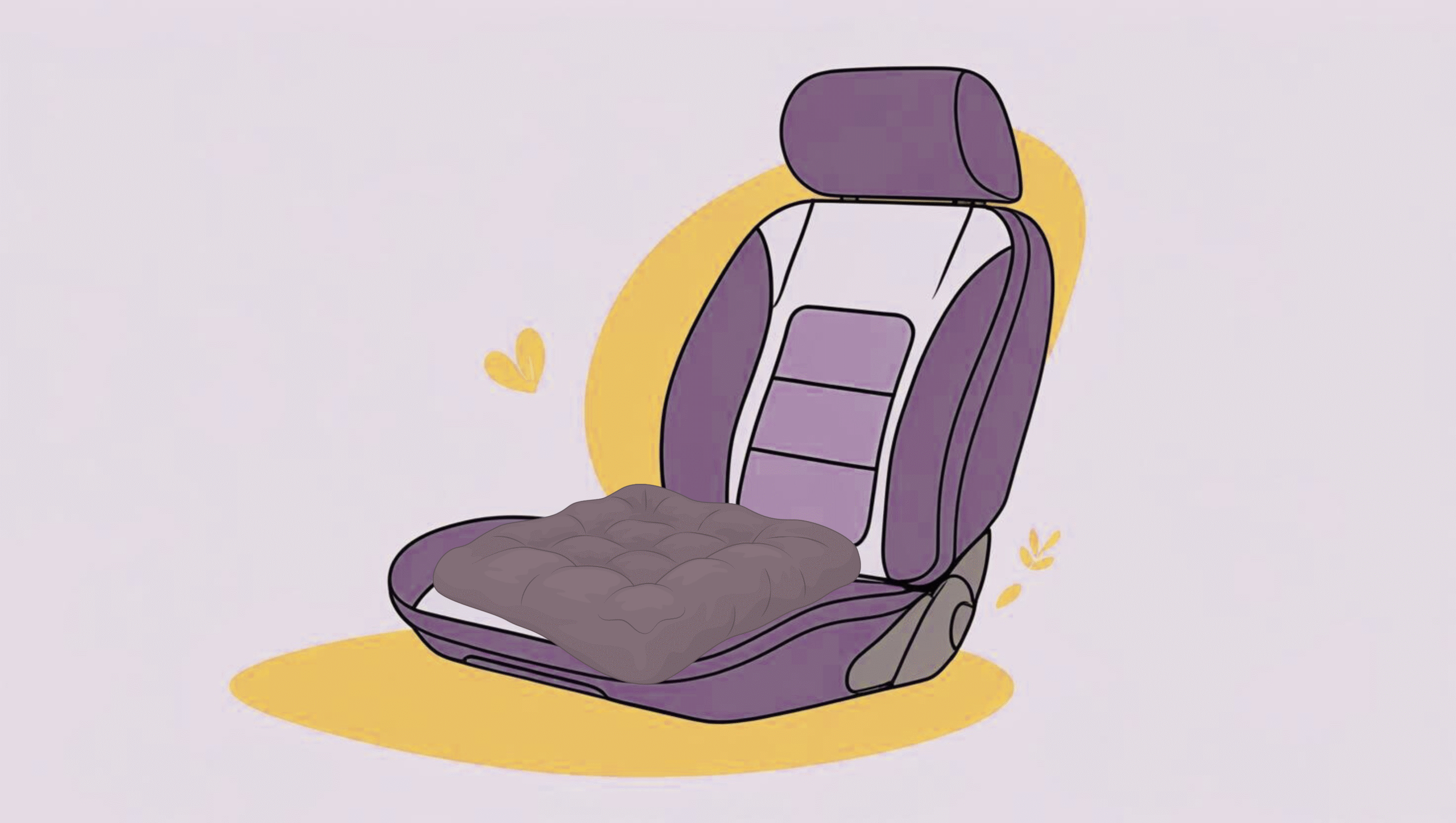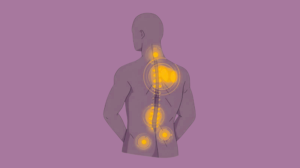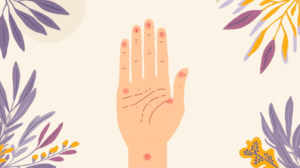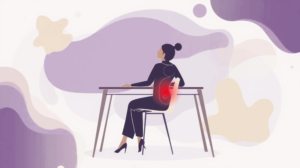Wincing with every time you settle in for your daily drive? Wincing with a backache from prolonged driving hours? You’re not the only one. Most passengers and drivers like yourself feel increasing discomfort over time, which tends to overlook the role of your car seat cushion in being a cause of it. It is easy enough to fault traffic or posture itself, but amazingly, that non-supportive, flat cushion you’re sitting on might be doing more harm than you’d imagine. A well-designed seat cushion is more than padding, it is a comfort game-changer, a posture helper, and a long-term spinal saver. This article investigates when and why it may be necessary to replace your car seat cushion and how to get the best one.
Think about how many hours a week you spend driving your vehicle. If you are driving back and forth to and from work in thick rush-hour traffic, taking long weekend road trips, or driving back and forth repeatedly to and from work, your seat is working more on you than you know. A good pillow can ease pressure on hips and lower back, encourage proper posture, and even assist with focus by removing distraction caused by discomfort. If your automobile seat no longer offers you the support that you deserve, then it is time to consider changing to one that is more compatible with your lifestyle and your body requirements.
What Is the Role of a Car Seat Cushion?
Purpose of a Car Seat Cushion
Car seat cushions are the site of direct body contact against the vehicle. Their primary function is to distribute pressure evenly, decrease pressure on the hips and lower back, and create a natural curving of the spine. A good cushion also absorbs some vibration and road impact, particularly for long travel or bad roads.
In addition to being comfortable, they also ensure you are awake while driving. The ideal cushioned seat will keep you from sliding back and forth or bending forward, both of which are awful for posture and ultimately for muscle strain. You remain more upright and firmly in place with the ideal cushion, which is useful when hard braking or sharp turns.
Health and Comfort Implications of Poor Support
If the automobile seat is not ergonomically supported, then it leads to coccyx pressure, reduced blood flow towards the legs, and spinal alignment. Studies conducted on Applied Ergonomics reveal that long duration sitting on unsupported vehicle seats has been associated with musculoskeletal discomfort as well as high levels of fatigue [1]. Short trips without a supportive cushioning may cause chronic pain over a period of time.
With time, months or years, repetitive pressure and malalignment can result in sciatica, compression of lumbar discs, or even postural imbalances that will affect your gait walk and balance in the core. They don’t just affect older adults either young adults, long-distance drivers, and delivery drivers are also at risk if their seats are poorly cushioned.
What Are the Signs It’s Time to Replace Your Car Seat Cushion?
Visible Wear and Tear
Outer indicators such as frayed material, eroded foam, or flat cushions are absolute indicators. Material deteriorates and loses its supportive nature over time compared to when it was originally built. When the cushion is flat or sagging, it likely is not giving your hips and back the support they need. Tiny tears also develop over time and add to the deterioration. If you’re constantly shifting your seating from side to side, your body is likely seeking ways to adapt for poor support.
Increased Back or Hip Pain While Driving
If you’re feeling hip or lower back pain after long car rides, your seat cushion has probably lost its cushioning effectiveness. When a seat cushion is worn out or flat, it will not be able to provide the pelvic tilt or the lumbar support required for driving comfort free of the hassle of pain. Pain will be a precursor to long-term problems if you don’t address it. Take notice of body discomfort Your body pains are most often the first notice that your sitting arrangement needs to be changed.
Flattened or Uneven Padding
Memory foam and other items will break down with continued use. An uneven or flat cushion presses on you, compressing your muscles and ligaments when you sit for a long period of time. If you discover your weight isn’t evenly distributed, or one section of the cushion is harder than the rest, you’re ready to buy a new one. A properly taken care of cushion will spring back when you get up, instead of staying compressed.
Bad Odor or Stains
Moisture retention and sweat accumulation can turn your cushion into a breeding ground for allergens and bacteria. Odor or staining indicates replacement with one that is hygienic. Pungent smells could also be the indication of mold or mildew growth, especially if your car interior is damp. Cleaning can work wonders for longevity, but some loss cannot be reversed and will require a replacement.
Why Should You Upgrade to a Better Car Seat Cushion?
Improved Posture and Spinal Alignment
A better cushion delivers increased pelvic support and encourages neutral spine posture. According to a study published in the Journal of Physical Therapy Science, use of ergonomic seat pads enhanced curvature in the lumbar area and alleviated pain from sitting for long periods [2].
A well-contoured cushion also minimizes slumping and muscle fatigue of your upper back and abdominal muscles to enable an upright supported sitting position. This positioning is essential in the prevention of long-term musculoskeletal disorders owing to repetitive strain while driving.
Enhanced Comfort During Long Drives
Luxury cushions minimize pressure points on your thighs and hips by spreading weight evenly. It is particularly crucial for truck drivers, road trippers, and ride-sharing drivers.
The added comfort also minimizes the constant necessity to change one’s posture for long periods of driving, which can help to curb weariness and enhance one’s concentration on the road.
Relief from Chronic Back, Tailbone, or Hip Pain
Orthopaedic and coccyx seat cushions are specifically designed to minimize load on sensitive areas of pain. These cushions normally have cut-outs or contouring that reduces pressure over the coccyx and sacral area, which is reinforced clinically [3].
By redirecting pressure away from sensitive nerve endings and joints, these cushions have proven to alleviate symptoms of herniated discs, sciatica, and piriformis syndrome in regular drivers.
Better Temperature Control and Breathability
More modern cushions contain gel-infused covers or foam that controls body temperature. Long drive route sweating is a frequent occurrence, and air-permeable fabrics avoid irritation of skin and heat retention.
On summer or hot weather days, gel or mesh-layered design cushions can be a big comfort boost while driving, particularly for drivers who drive a few hours per day.
What Types of Car Seat Cushions Can You Upgrade To?
Memory Foam Cushions
These cushions adjust to fit your body with responses to heat and pressure, providing customized comfort. Memory foam of high density maintains its shape even after long use, alleviating pressure on the tailbone, hips, and spine. They’re especially effective for those who drive for hours on the road since the material prevents weariness from long sitting.
Orthopedic and Coccyx Cushions
Orthopedic pillows are designed to support spinal positioning and take some load from the lower back. Coccyx pillows have a U-shaped cut-out that elevates the tailbone off the coccygeal area. They’re highly recommended for individuals with sciatica, herniated discs, or those who are recovering from injury. A study in Disability and Rehabilitation discovered that coccyx cut-out pillows alleviated sitting pain significantly in patients with chronic lower back pain.
Gel-Infused Cushions
These integrate memory foam and a heat-release gel layer to disperse heat and remain temperature-neutral. The gel layer also provides a bit of additional resiliency to the cushion, stimulating greater pressure distribution. Suitable for warm weather drivers or sweaty drivers, these cushions improve comfort as well as skin health on long drives.
Heated or Cooling Seat Pads
These high-tech cushions use electronic temperature control to deliver heat in winter or a cooling sensation in summer. Heat pads can help to increase blood flow and reduce muscle stiffness, best utilized by the elderly or people with arthritis. Cooling pads, often driven by fans or air pressure, chill the body and maintain energy levels constant on long drives.
What Factors Should You Consider When Choosing a New Seat Cushion?
Material and Durability
Utilize material with both comfort and durability. Medical-grade gels and CertiPUR-US approved memory foam are the best recommendations. They last long in support, do not droop after lengthy use, and have no chemicals that are toxic. In case you drive a long distance most of the time, utilize high-density foam to prevent flattening and give you consistent support.
Size and Compatibility with Your Car
Test your car seat and make sure the cushion will not hinder seatbelt operation or driving position. There are some cushion designs specifically for trucks and SUVs and others for small cars. Make sure also that the cushion has a non-slip base or adjustable straps which will not shift during driving, especially on sharp turns and hard braking.
Washability and Maintenance
Find cushions that come with covers which are washable and removable. Maintenance ease creates hygiene and increases the product’s lifespan. For added convenience, use stain- and odor-resistant materials. Porous mesh or bamboo cloth covers are particularly useful in avoiding sweat and dust mite buildups.
Price vs. Value
More money does not necessarily mean better quality. Compare your price to verified user reviews, brand reputation, and warranty policy. Check for cushions supported by clinical recommendations or tested through ergonomics. Spending a little more for something that is proven to maintain spinal health might save you from shelling out more money in higher medical payments down the line.
What Are the Benefits Beyond Comfort?
Reduced Fatigue and Stress While Driving
Poor support makes your muscles strain too hard to maintain your posture. A cushion that has been designed to the optimum reduces physical effort, which leads to less stress and better energy during and after driving. In the long run, it also prevents micro-movements and tension development, which are not noticed but cause driver fatigue.
Boost in Driving Performance
When you are comfortable in your own body, your reaction time, focus, and agility are improved. This can reduce accidents and render extended driving less taxing on the mind. Comfort while sitting also reduces distraction by discomfort or restlessness so that you have your eyes and mind on the road for longer hours.
Long-Term Health and Wellness
Poor posture over a long period can lead to spinal disc issues, hip alignment, and circulatory disturbances. Replacing your car seat pad is a precaution against keeping your musculoskeletal system healthy. Good sitting postures also ensure good nerve function and circulation, which is crucial for those who have varicose veins or sciatica issues.
Final Thoughts on Upgrading Your Car Seat Cushion
Replacing your car seat cushion isn’t a luxury, it’s being kind to your body. With the way you’re driving, 20 minutes or 2 hours, an appropriate cushion can make a huge improvement to your feel. Knowing about wear and what to look for in a new cushion, you can spend for your comfort and your health. Don’t let chronic pain be your daily navigator. Switch and drive free from pain.
A higher-quality cushion is a one-time, cheap investment that will pay you back time and again. Improved posture, improved circulation, and less pain can save your future medical expenses and make your life all the better. If you’re a daily commuter, ride-share operator, or just someone who loves being comfortable, this’s one adaptation your body will pay you back for every mile you drive.
Frequently Asked Questions:
1. Can an old car seat cushion cause back pain?
Yes. A degraded or flattened cushion fails to provide necessary lumbar and pelvic support, contributing to poor posture and chronic pain.
2. What are the health benefits of upgrading a car seat cushion?
Better posture, reduced pressure on the spine, improved circulation, and lower chances of developing musculoskeletal issues.
3. Do orthopedic car seat cushions really work?
Yes. Clinical studies support their effectiveness in reducing pressure and improving sitting posture over prolonged periods.
4. How often should I change my car seat cushion?
Every 1 to 2 years, or sooner if you notice discomfort, flattening, or visible damage.
5. Can a new cushion help improve my posture while driving?
Absolutely. Proper cushioning supports the natural curve of your spine and helps maintain an upright, relaxed driving posture.
References
1. Harrison D et al., Seating Position and Back Pain in Drivers, Applied Ergonomics – https://www.sciencedirect.com/science/article/abs/pii/S0003687013001433
2. Kim JH et al., Effects of Seat Cushions on Lumbar Spine Alignment, Journal of Physical Therapy Science – https://www.jstage.jst.go.jp/article/jpts/27/3/27_jpts-2014-486/_pdf
3. Gordon SJ et al., Biomechanical Benefits of Coccyx Cushions, Journal of Manipulative and Physiological Therapeutics – https://www.jmptonline.org/article/S0161-4754(03)00168-2/fulltext























